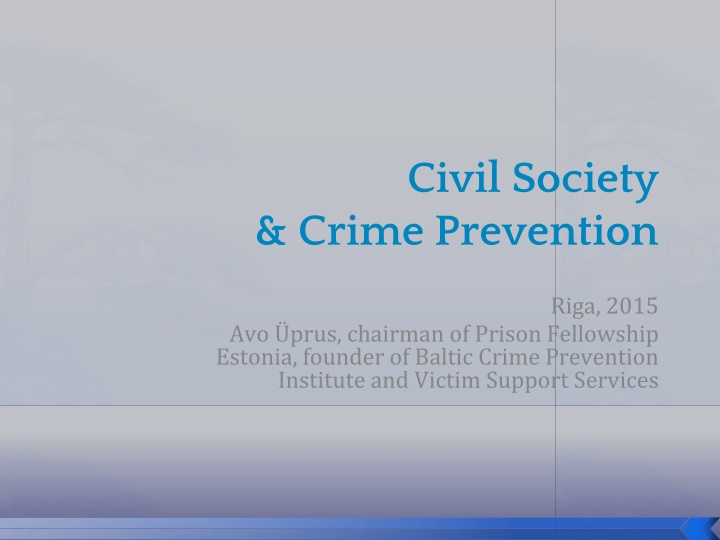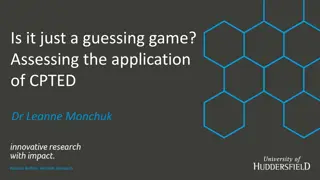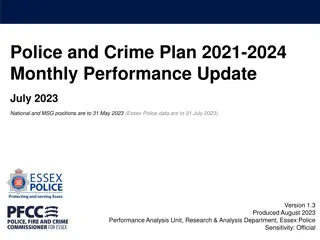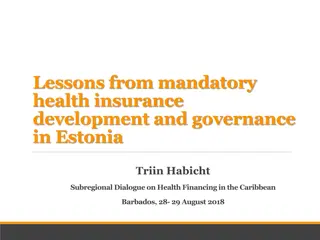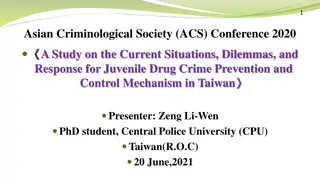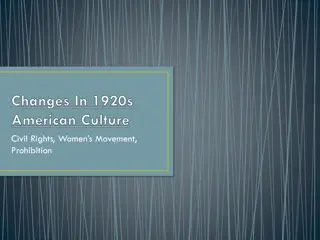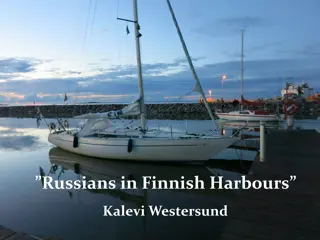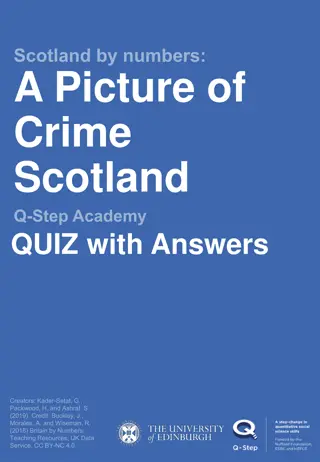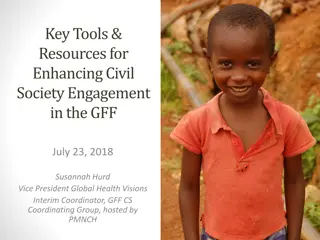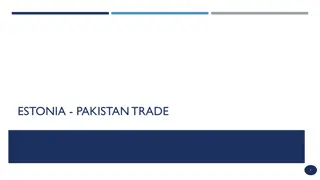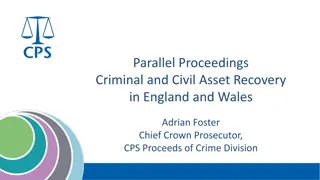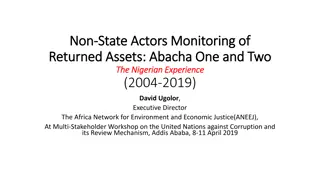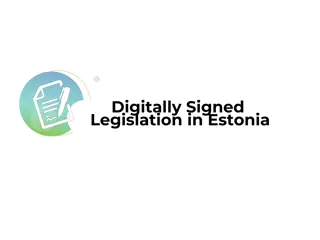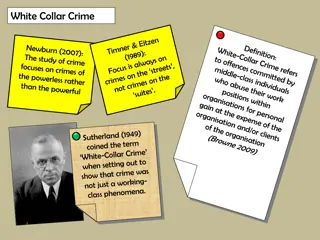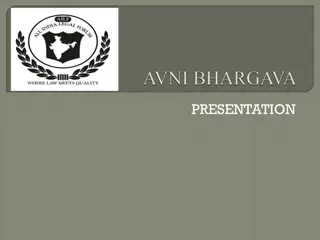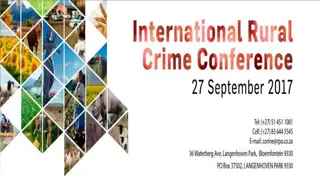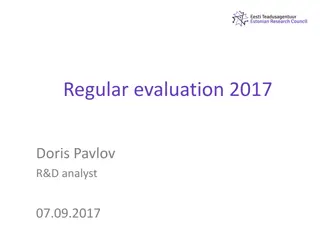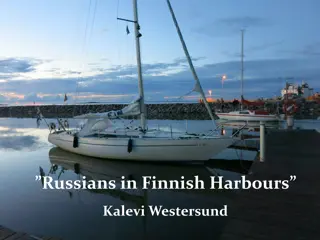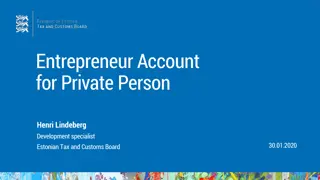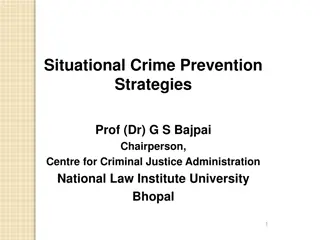Civil Society & Crime Prevention in Estonia
Avo Prus, chairman of Prison Fellowship Estonia, discusses the importance of restorative justice in combating crime. Explore Estonia's civil society development, crime statistics, and initiatives like the Estonian Civil Society Development Concept.
Download Presentation

Please find below an Image/Link to download the presentation.
The content on the website is provided AS IS for your information and personal use only. It may not be sold, licensed, or shared on other websites without obtaining consent from the author.If you encounter any issues during the download, it is possible that the publisher has removed the file from their server.
You are allowed to download the files provided on this website for personal or commercial use, subject to the condition that they are used lawfully. All files are the property of their respective owners.
The content on the website is provided AS IS for your information and personal use only. It may not be sold, licensed, or shared on other websites without obtaining consent from the author.
E N D
Presentation Transcript
Civil Society & Crime Prevention Riga, 2015 Avo prus, chairman of Prison Fellowship Estonia, founder of Baltic Crime Prevention Institute and Victim Support Services
Restorative justice Crime is violence against people and relationships. It is important to get things right again. In requires the participation of the victim, offender and society, to look for solutions that encourage healing.
Estonia 2015 Population 1,3 milion Territory 45,500 sq.km Crimes 40,000 Under probation 5319 Prisons 4 Prisoners 2784 Costs 48 676 213 euro 30 000 NGO-s
EKAK and other basic documents The Estonian Civil Society Development Concept (EKAK) is a document which describes the different roles of the public sector and the non-profit sector which supplement each other, and the co- operation principles in developing and implementing public policies and building up the civic society in Estonia.
National Foundation of Civil Society s (NFCS) NGO Fund National Foundation of Civil Society (NFCS) is state financed civil society fund in Estonia. NFCS was established by the Estonian Government on February 18, 2008. Executor of the founder's rights is Ministry of the Interior.
How Does it Work? Estonian Civil Society Development Concept (EKAK) Development Plan for Civic Initiative Support 2007-2010 (KATA) Civil Society Development Plan 2011-2014 (KODAR)
Church and Society A protocol of common interests has been made between the Government and Estonian Council of Churches. A working committee of EELC and the Government has been put together.
Participation with The commitees for planning and observing the distribution of structural funds. Conducting and carrying out development-documents for local governments. Partnership-contracts Projects, public procurements, offering services etc Conducting and carrying out national development plans
Prison Reform 10 years ago Estonia had 10 prisons The cost for one prisoner is 1000 per month Three old prisons were closed in last decade. One old Prison thatwas closed ... t By 2018 we will close the last 3 old prisons buildings and build a new one.
Baroness Vivien Stern: It means bad usage of the resources in the countries in economical difficulties. If penal reform is possible in the countries in economical difficulties then the priority must be sharp diminution of the number of people to be sent in prison and taking into use the cheaper, but no less effective common sanctions (Stern, 1999).
Recidivism Every other ex-prisoner commits a new crime within a year this rate has been a stable for years at 48-49% WHY? Because the imprisonment is destroying humanity and dignity of human beings
First we should restore the person, a human being.
What can we do about it? Rebuilding dignity and humanity New role model Pro Social Adult SEL SID SON
Prison Fellowship Estonia Prison Fellowship Estonia has a unique horizontal network, including: Aftercare services and rehabilitation programs Prison work (programs) Victim support Crime prevention programs Street children/ children at risk
BKI Baltic Institute for Crime Prevention and Social Rehabilitation (BKI) was established in the year 2000. The mission of the Institute is spiritual and moral healing of society through implementation of restorative justice.
Healing That mission realizes the healing of harmed persons, their relationships and community. The output of restorative approach is cooperation between public and third sector for crime prevention.
BKI activities Greying prisoners Remorse and Forgiveness Victim Empathy Program Training program of Placation of Aggressiveness Improving Knowledge and Practice of Restorative Justice Justice initiatives Informal Gate Mentoring
IGM as support system for ex- offenders Support persons or mentors can work with those prisoners who are due to be released soon & people imprisoned in open prisons. They provide extra support to persons released on parole in addition to probationary supervisors, but primarily the support person service has to be aimed at people released from imprisonment on term.
Management scheme 1. Sharing information about service with prison officials. 2. The officials of the prison will introduce the service to the prisoners who might be in need for such service. 3. The prison will notify the Regional Coordinator of the number of releasees of that period who are interested in support persons 4. The Coordinator will look up support persons. 5. Providing the support person service (the role and precise duties of the support person have been specified above) 6. Building networks outside (local Governements, NGO-s and parishes etc). 7. SEL, SID, SON. Long time support.
Activities of the mentor 1. Basic training 45 hours 2. Prison visits (6 months before release).. 3. A written contract 4. The support person and prison official will map the coping and problems of the prisoner on the basis of risk factors to prepare the prisoner for release. 5. Preparing a detailed release plan. 6. Social and personal network. building. 7. Upon release, the support person will help the release to perform initial operations and also to adjust in the community. 9. Field work and support after release (6 months). 10. Exchanging information and co-visions.
RESPECT Respect or respectful treatment is a human right. Guaranteeing this right is the obligation of the prison administration.This approach is possible and there should be courses provided for the prison officials on this issue. Dignity is a cornerstone for rehabilitation. By restoring the dignity we build a humane society of human beings.
Thank You! Avo prus Avo.uprus@eelk.ee www.crimeless.eu
